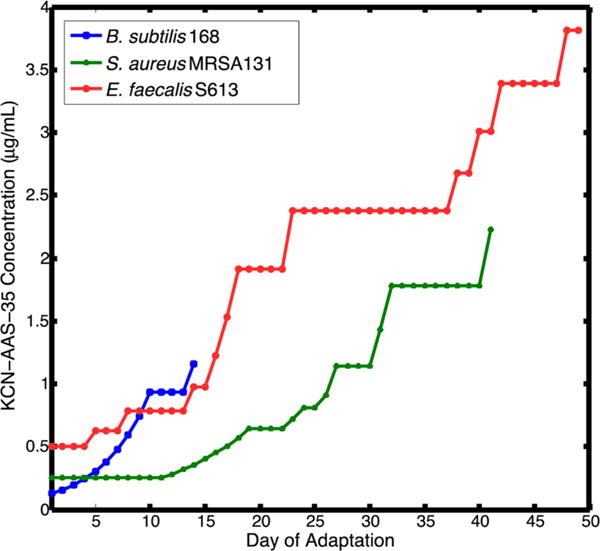Figure 3.

Adaptation timeline for B. subtilis 168, S. aureus MRSA131, and E. faecalis S613 to resist KCN-AAS-35. 24 replicate populations of each strain were initially grown at subinhibitory concentrations of drug. A portion of each population was transferred daily to the same concentration and an elevated concentration. Once all of the populations could grow to a high cell density at the elevated drug concentration, the populations were transferred from that concentration to a higher concentration (see Methods). Transfers were continued until all of the populations could grow well at a concentration above their starting MIC. Therefore, if some of the populations were struggling to grow at the elevated drug concentration, all of the populations were maintained at a lower concentration until the slower adapting populations could also grow well at the higher concentration. The clinical strains, S. aureus MRSA131 and E. faecalis S613, struggled to adapt to KCN-AAS-35 and took 40 or more days to reach growth at their respective final concentrations. Additionally, many of the populations of S. aureus MRSA131 and E. faecalis S613 died during adaption, with only eight and five populations remaining viable by the end of adaptation for S613 and MRSA131, respectively. The lab strain, B. subtilis 168, achieved growth at an elevated concentration after 14 days.
